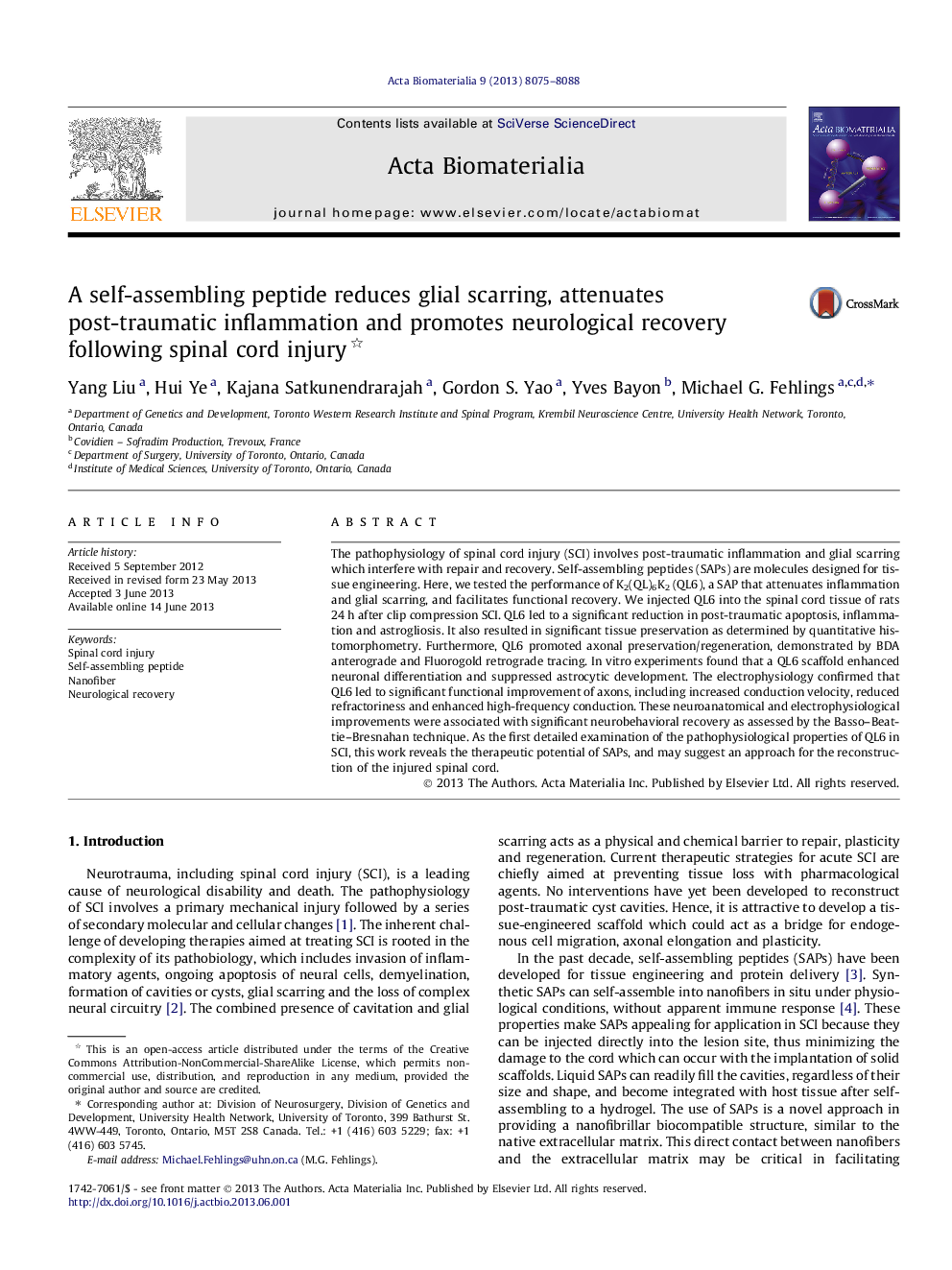| Article ID | Journal | Published Year | Pages | File Type |
|---|---|---|---|---|
| 10159767 | Acta Biomaterialia | 2013 | 14 Pages |
Abstract
The pathophysiology of spinal cord injury (SCI) involves post-traumatic inflammation and glial scarring which interfere with repair and recovery. Self-assembling peptides (SAPs) are molecules designed for tissue engineering. Here, we tested the performance of K2(QL)6K2 (QL6), a SAP that attenuates inflammation and glial scarring, and facilitates functional recovery. We injected QL6 into the spinal cord tissue of rats 24Â h after clip compression SCI. QL6 led to a significant reduction in post-traumatic apoptosis, inflammation and astrogliosis. It also resulted in significant tissue preservation as determined by quantitative histomorphometry. Furthermore, QL6 promoted axonal preservation/regeneration, demonstrated by BDA anterograde and Fluorogold retrograde tracing. In vitro experiments found that a QL6 scaffold enhanced neuronal differentiation and suppressed astrocytic development. The electrophysiology confirmed that QL6 led to significant functional improvement of axons, including increased conduction velocity, reduced refractoriness and enhanced high-frequency conduction. These neuroanatomical and electrophysiological improvements were associated with significant neurobehavioral recovery as assessed by the Basso-Beattie-Bresnahan technique. As the first detailed examination of the pathophysiological properties of QL6 in SCI, this work reveals the therapeutic potential of SAPs, and may suggest an approach for the reconstruction of the injured spinal cord.
Related Topics
Physical Sciences and Engineering
Chemical Engineering
Bioengineering
Authors
Yang Liu, Hui Ye, Kajana Satkunendrarajah, Gordon S. Yao, Yves Bayon, Michael G. Fehlings,
